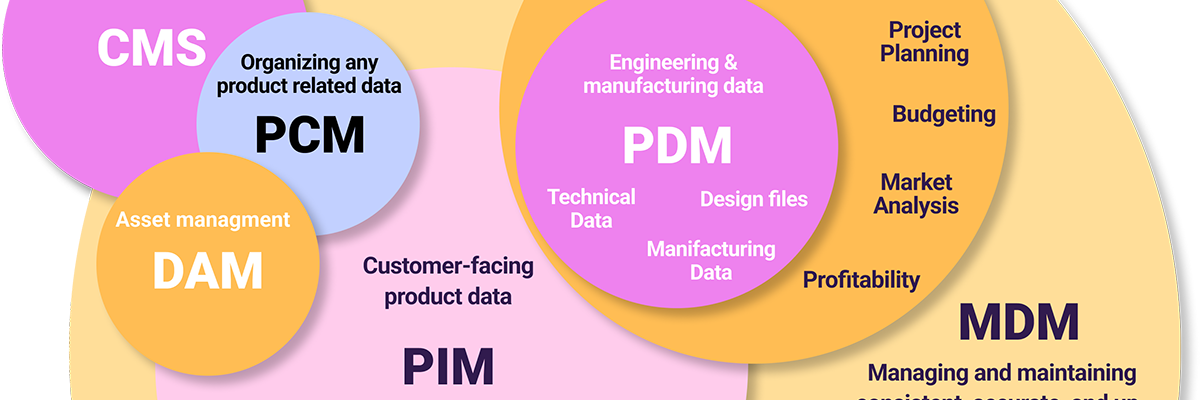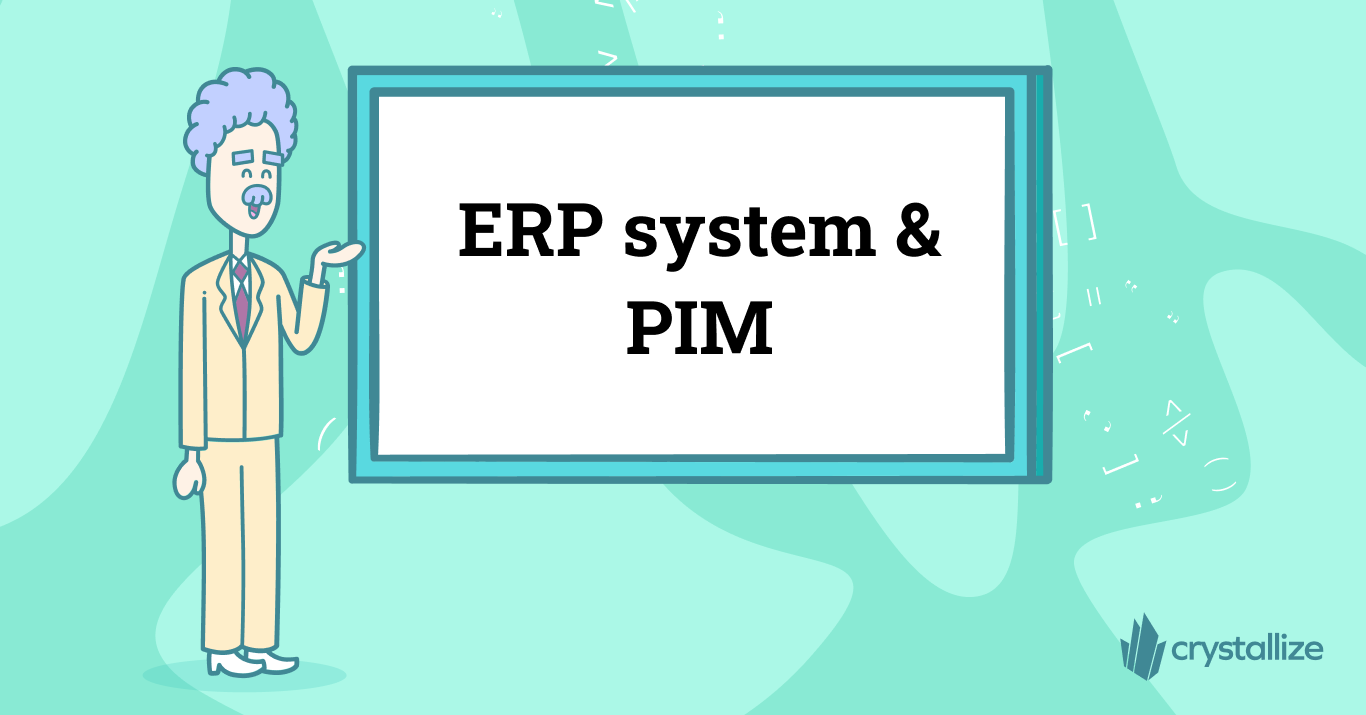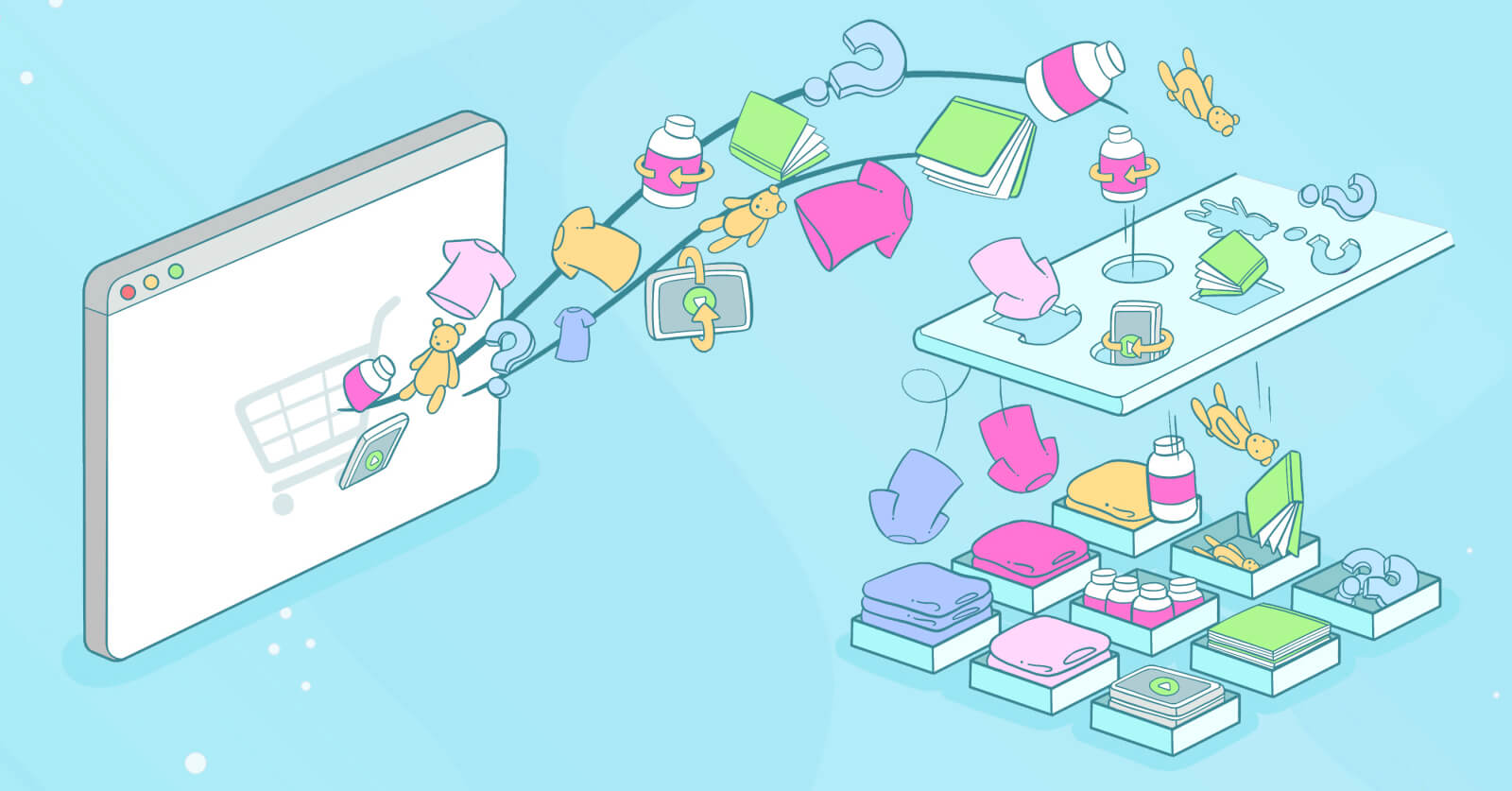PIM vs. ERP Systems: The Differences
ERP helps to manage core business processes (manufacturing, supply chain, services, procurement, finance, HR, etc.) in an integrated system efficiently.
Product Information Management (PIM) and Enterprise Resource Planning (ERP) systems are both essential for an organization’s operations and data management. While there is some minor overlapping, they serve different purposes: kind of like a keyboard and a mouse.
ERP systems are designed to provide a centralized and integrated view of all the different aspects of a business, while PIM systems are designed to centralize, manage, and distribute accurate and consistent product information to various channels and stakeholders.
Think of ERP as a glue that binds together the different systems of a large organization (beyond just PIM), helping processes unify under a single application with a single interface.
Without it, each department would have its separate system with little to no interdepartmental alignment, thus making coordination and overall business processes much harder to manage than they need to be.
ERP helps companies manage and automate their core business processes, such as finance, procurement, and inventory management, and also includes modules for analytics, reporting, forecasting, and customer relationship management.
It helps in providing a holistic view of the business by integrating all the different data and processes of an organization into a single system, improving communication and decision-making and thus increasing efficiency and overall performance.
👍 Improved efficiency by saving time and reducing error rates
👍 Better decision-making thanks to a history of data such as sales figures and customer information saved in an ERP
👍 Increased visibility of all business processes and data, which can help businesses gain a better understanding of their operations and identify areas for improvement.
👍 Reduced costs by streamlining processes, improving inventory management, and reducing the need for manual data entry.
👍 Improved collaboration by providing a common platform for sharing data and information.
- SAP: SAP is one of the most widely-used ERP systems in the world and offers a comprehensive solution for managing various business processes, such as finance, supply chain, and customer relationship management.
- Oracle: Oracle ERP provides a comprehensive solution for managing various business processes, and it is a popular choice for large enterprises.
- Microsoft Dynamics: Microsoft Dynamics is a popular ERP solution for small and medium-sized businesses. It offers a wide range of modules for managing various business processes.
- NetSuite: NetSuite ERP is an all-in-one cloud business management solution that helps organizations operate more effectively by automating core processes and providing real-time visibility into operational and financial performance.
In a word, no. Crystallize would most often be used in combination with an ERP since it is a customer-facing service that aims to provide information that you can use to market and sell your products. Crystallize captures the order and most often sends the order to an ERP as part of the headless architecture.
Using the event-driven Webhooks in Crystallize, you typically integrate with the ERP in the context of order fulfillment. Many times the core product data like SKU, retail price, and stock are also integrated from the ERP to Crystallize.
Crystallize ❤️ ERP - and works in great harmony when integrated.
PIM systems are designed to centralize and manage product data.
ERP systems provide a comprehensive solution for managing a wide range of business processes, including finance, supply chain, and customer relationship management.
Simply put, PIM focuses solely on product and product data, while ERP concentrates on managing higher-level business processes with products.
However, note that the two systems can work together and complement each other. PIM can be integrated with ERP systems to provide a holistic view of product and business operations.
What is PIM, and how different is it from ERP? Where do PCM and DAM overlap? And do you need MDM for your business use case? We’ve tried to clear up the acronym confusion in eCommerce with the following infographic that provides you with a visual comparison of all relevant terms. Individual posts dig deeper into each term and the concept behind it.
📝READ WHAT IS PIM AND DOWNLOAD INFOGRAPHIC FOR FREE FROM HERE

Take a manufacturing company that produces and sells products as an example.
The company uses the ERP system to manage its financials, including invoicing, accounts payable, and accounts receivable, but also to manage its inventory, including tracking raw materials and finished goods and monitoring stock levels. Additionally, product management and scheduling, tracking orders, capacity, etc. Finally, it is used to manage HR, employee information, benefits and payroll, and time and attendance.
By using an ERP system, the company can automate many of these back-office functions and have a centralized view of all the different aspects of their business, which helps them to make better decisions and improve their overall efficiency and performance.
Not sure if you need an ERP system? Don't worry. We got you covered.
Seriously, schedule a personal 1-on-1 Crystallize demo, tailor-made to your use case, to understand the ins and outs of both approaches. Or, why not SIGN UP for FREE and get an unparalleled level of support from our team to help you get going.
Understanding The Basics🛒
What is PIM, and How Does Product Information Management Work?
PIM is your centralized product information system from which the product data is distributed to all relevant stakeholders, teams, and sales channels.



